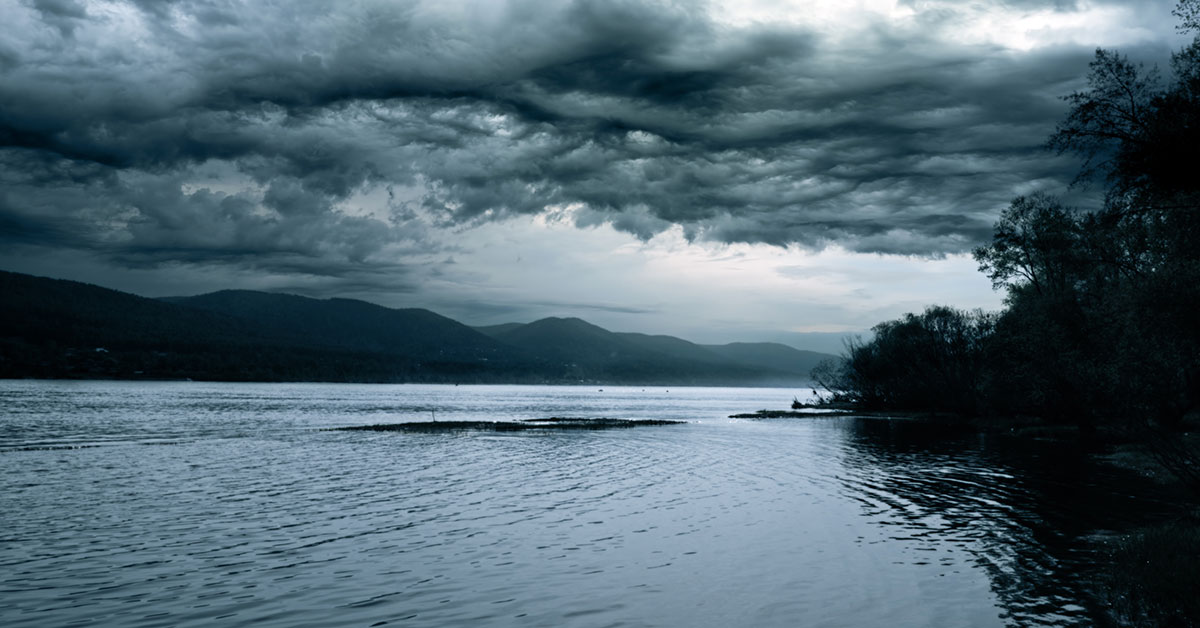

In the summertime, thunderstorms can pop up during the day even when severe weather is not in the forecast. What do you need to know to stay safe when there’s weather out on the lake?
The best way to stay safe in a thunderstorm is, of course, to avoid it if you can.
That means that before you leave the marina you should always check a reliable weather report such as the Weather Channel, National Weather Service, or NOAA website or a good weather app on your smartphone.
If severe weather is in the forecast, it’s better to be safe than sorry! Even if it means postponing a fun day of boating, you should opt to stay off the water when it’s likely to storm.
“There are no specific warnings or advisories for lightning, but all thunderstorms produce lightning,” according to the National Weather Service. lighting strike to a vessel can be catastrophic.
In addition to lightning, thunderstorms can also produce wind, rain, hail, and lack of visibility, which can all pose a risk when you’re out on the water.
Due to these dangers and especially the risk of injury from lightning if you have the option to get off the water and go to a safe location to wait out the storm, then you absolutely should.
Before you go boating, you should familiarize yourself with local weather patterns and learn how to recognize the signs of an approaching storm. This can help you to know when it’s necessary to get to safety.
That said, sometimes weather can come without warning, when you’re out on the lake and far from the marina. So here are a few tips on how to stay safe in the event of an unexpected storm.
First of all, don’t panic. Staying calm is important to maintaining safety. If it looks like you’re going to have to ride out a storm, there are a few steps you should take right away.
When you hear thunder, have everyone get out of the water immediately, and make sure they keep their feet out of the water too. The reason is that if lightning strikes the water especially fresh water it can travel a long way.
You should also have everyone put on a life jacket as a safety precaution.
If you can’t get off the water but are close to shore, some experienced boaters recommend finding a protective area, such as a cove or upwind shoreline, and dropping anchor.
Others say to avoid potential shoreline hazards and simply face your boat into the wind, turn on your navigation lights, and drive slow just fast enough to maintain direction, control the boat, and avoid drifting toward potential hazards.
Either way, you should stay as low in the boat as you can, turn off electronics, and avoid holding onto metal.
“The bad thing about boats out on the water is that that’s the highest point out there, and that can attract lightning, says Chris Edmonston, president of the Boat U.S. Foundation for Boating Safety.
“If you’re standing up in the boat, you’re the tallest point in the boat and that’s not where you want to be. So we tell people to sit down as low as possible.
If you’re caught out on a jet ski, he says, stay on the jet ski unless you have the option to get to shore or on a boat; it’s safer to be on a jet ski than in the water.
Once everyone is out of the water, on the boat, and wearing a life jacket, then choose the safest way to wait out the storm. If your boat has a cabin, everyone should go inside. If your boat doesn’t have a cabin, everyone should stay low and toward the center of the boat.
This should go without saying, but you shouldn’t fish during a thunderstorm, and everyone should stay completely out of the water.
If all goes well, the storm will blow past in 20 to 30 minutes, and then you’ll be able to assess whether all threatening weather has passed or whether you should head to shore.
If the sky indicates continued risk of thunderstorm activity, but it looks like you’ve got some time to work with, then you should try to get off the lake before the next storm arrives.
If there are no more signs of weather, and you determine that it’s safe to remain on the lake, it’s still best to way at least 30 minutes after the last clap of thunder before resuming normal activities.

